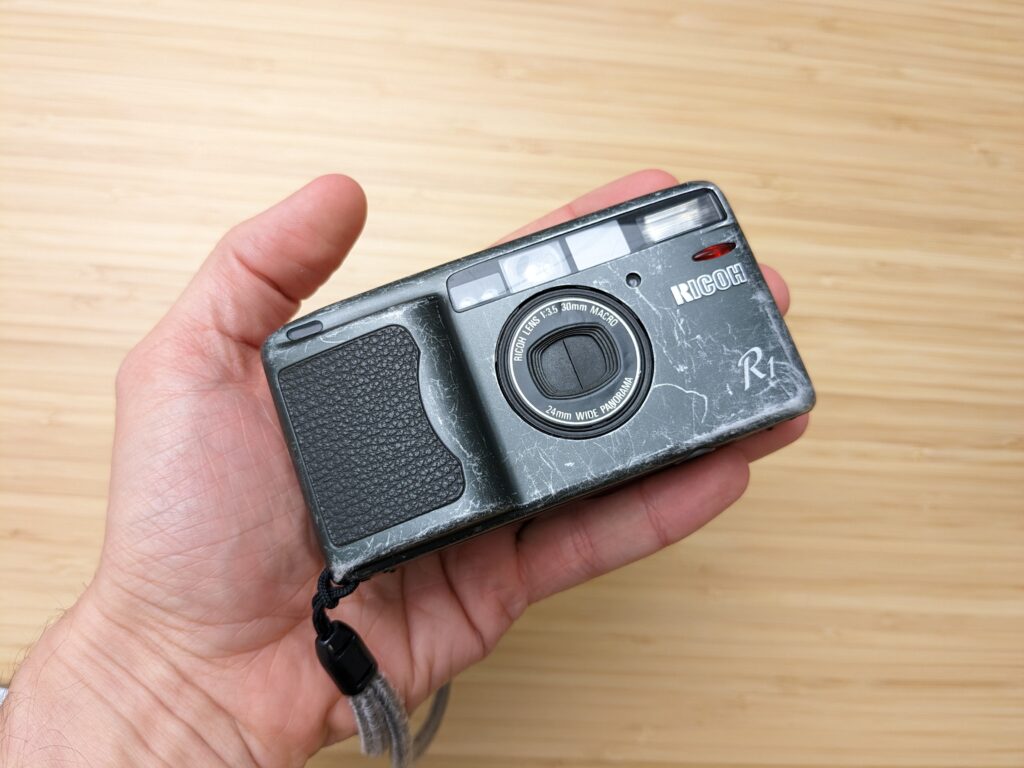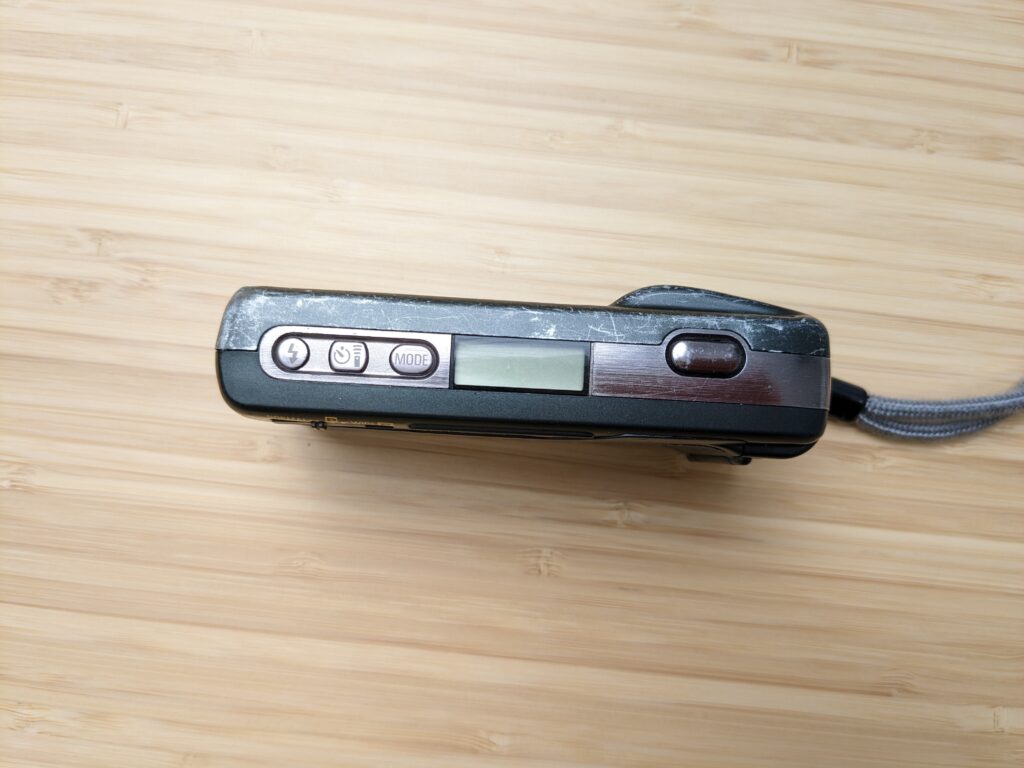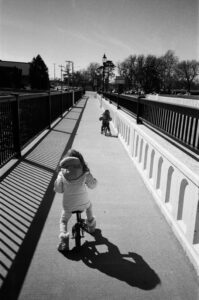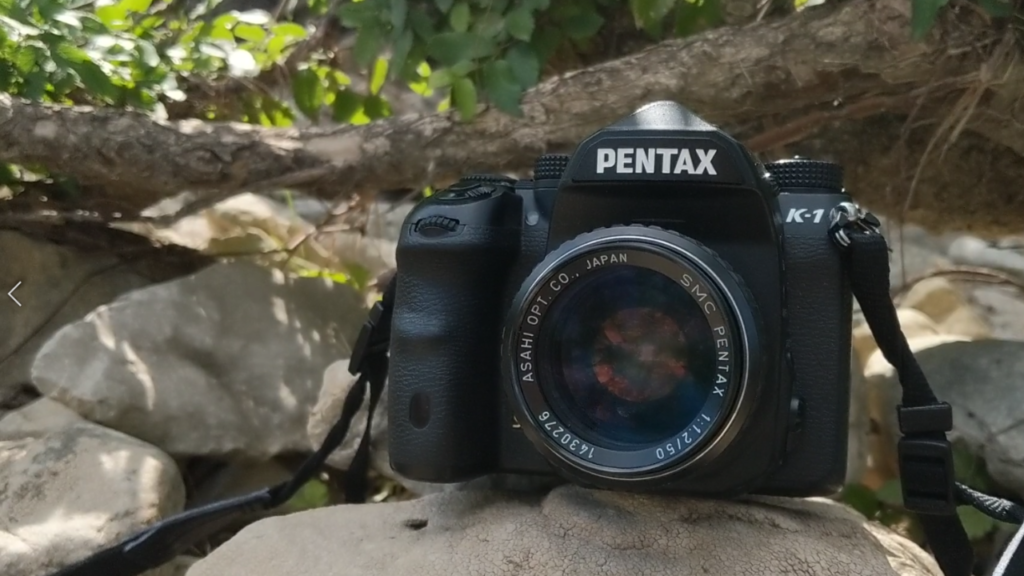I had the opportunity to photograph with a forum members Ricoh R1. A real treat considering the price of these cameras nowadays. The camera is a premium compact 35mm film body with a great prime lens. It’s too bad these cameras are plagued with electronic issues, and this copy is no exception. But despite all that I am more tempted than ever to pick one up myself after using it for the first time.
Why The Ricoh R1?
For me, the main draw of the camera is the compact size and fantastic lens.

The Ricoh R1 is ultra compact. The film canister loads on the right side of the camera, which is the only place it could physically fit. The raised grip is just large enough to accommodate the film. The camera will auto wind all the film onto the left side of the camera, and then as you shoot roll it back into the canister. This design makes it the smallest 35mm film camera I’ve used to date, and one of the most compact out there.

There’s a 30mm f3.5 lens on the front, that can shift into a 24mm when you shoot in panorama mode. A mode I didn’t try, but maybe should have. Like other cameras of the era, the “panorama” mode simply drops curtains in front of the film to provide the different aspect ratio. Unlike most cameras though, the lens shifts to provide that wide field of view in the first place. I had a lot of fun with the panoramic only Minolta P’s I owned for a while, so I do appreciate having this creative feature.

I do wish the lens was a little faster, but that probably would’ve made the 24mm pano mode impossible without size compromise. I do shoot indoors a lot, and having that extra light can come in handy.
By the way, the green color is beautiful. They should make more cameras this color!
More on the 30mm F3.5 lens
I am impressed with the sharpness of the lens.
Stopped down when it is outside in the daylight the lens is quite sharp even in the corners. Fantastic and no complaints there. One of the best I’ve used.

Shooting at wide open, or what I assumed to be wide open as I was in lower light scenarios, is still sharp in the center but the corners start to fade to mush. It is really only the extreme corners, and very quickly turns sharp again. In situations where you are shooting close up, like an indoor portrait, you won’t notice it in the bokeh. It’s just for wide angle landscapes or something like that where the edges should be crisp.
Using the Ricoh R1 as a daily carry
It really is a shame that these cameras are prone to such electronic failures, because actually using the camera is lovely. It is so slim that it fits into any pocket. Focusing felt nice and snappy. The 30mm focal length is great for taking sites in walking around. When you want a portrait or close-up shot, the lens focuses as close as 35cm (or so I’ve read).
The flash and metering seems well balanced and pretty natural looking. That makes really low-light handheld shots possible. There’s even a night mode that does a double exposure. Not that I got to try it out, once again, thanks to electronic issues.
Apparently, you can navigate all or almost all the camera features just by memory and amount of clicks, even if your screen is broken (common). I decided to avoid the frustration of learning it and messing it up anyway, since I only had the camera for a little bit anyway. But just know it’s possible if you end up with a broken copy.
Image samples from Ricoh R1
Here are some images I took on the camera and really liked. You can get a good idea of the lens quality with these.




Ricoh R1 Video
I didn’t make a dedicated video on this camera, but I did feature it in my video talking about how your used camera tells a story! Enjoy, and happy snappin’



